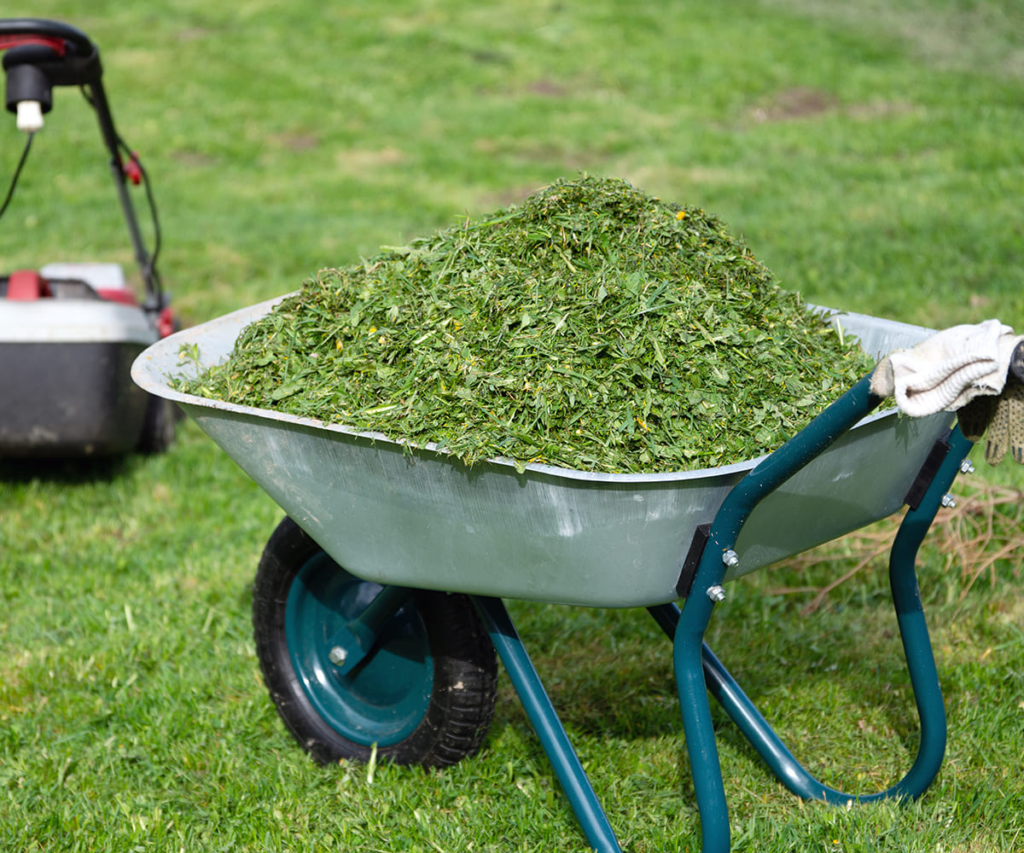Fertilisers play a crucial role in keeping lawns and gardens healthy but choosing between organic and chemical options can be challenging. Both have their pros and cons, and the right choice depends on factors like soil health, environmental impact, and long-term sustainability. In this article, we’ll break down the key differences between organic and chemical fertilisers, helping you make an informed decision for your lawn and garden care.
What Are Organic and Chemical Fertilisers?
Organic fertilisers are made from natural sources such as compost, manure, seaweed, and plant-based materials. These fertilisers release nutrients slowly as they break down in the soil, improving its overall structure and increasing microbial activity. Organic fertilisers focus on feeding the soil rather than just the plants, leading to long-term soil health and sustainability.
Chemical fertilisers, also known as synthetic or inorganic fertilisers, are manufactured using minerals and synthetic chemicals. They provide a quick and concentrated nutrient boost to plants. These fertilisers often come in granule or liquid form and are designed to deliver precise nutrient ratios for fast results. However, they can have unintended consequences for soil health and the environment.
Nutrient Availability and Absorption
One of the biggest differences between organic and chemical fertilisers is how they release nutrients. Organic fertilisers break down gradually, allowing plants to absorb nutrients over time. This slow-release mechanism prevents nutrient leaching and promotes consistent growth.
Chemical fertilisers, on the other hand, provide an immediate nutrient boost. While this can be beneficial for rapid plant growth, it also means nutrients can wash away quickly with rain or excessive watering, leading to wastage and potential environmental harm.
Nutrient Balance
Organic fertilisers offer a balanced range of nutrients, including trace elements that support overall soil health. They encourage natural microbial activity, which improves nutrient absorption for plants.
Chemical fertilisers are formulated with specific nutrient ratios, making it easier to target particular plant needs. However, their limited range of nutrients can lead to soil depletion over time, requiring additional amendments to maintain soil quality.
Soil Health and Long-Term Impact

Organic fertilisers enhance soil structure by adding organic matter, which improves aeration, water retention, and drainage. Healthy soil supports root development and reduces the risk of erosion.
Chemical fertilisers do not contribute to soil structure. Over time, repeated use can lead to soil compaction and a decline in natural microbial activity, making soil less fertile and more dependent on synthetic inputs.
Microbial Activity
Healthy soil relies on beneficial microbes that help break down organic matter and make nutrients available to plants. Organic fertilisers encourage microbial activity, leading to long-term soil health and sustainability.
Chemical fertilisers can disrupt microbial populations, especially if they contain high levels of salts or harsh compounds. This can reduce soil fertility over time and create a cycle of dependency on synthetic fertilisers.
Environmental Considerations
Excessive use of chemical fertilisers can lead to nutrient runoff, where excess nitrogen and phosphorus wash into waterways. This contributes to problems like algal blooms, which harm aquatic ecosystems and reduce water quality.
Organic fertilisers release nutrients slowly and are less likely to cause pollution. By improving soil health, they help retain nutrients where they are needed, minimising environmental risks.
Carbon Footprint
Organic fertilisers are typically produced using sustainable methods, reducing their overall carbon footprint. Many organic fertilisers are made from waste materials, contributing to a circular economy.
Chemical fertilisers require significant energy to manufacture, particularly nitrogen-based fertilisers, which rely on fossil fuel-intensive processes. This makes their production a major contributor to greenhouse gas emissions.
Application and Ease of Use
Chemical fertilisers are easy to apply and provide quick results, making them a popular choice for homeowners looking for immediate improvements. They come in standardised formulations, ensuring consistent nutrient supply.
Organic fertilisers require more effort to apply and may take longer to show visible results. However, their long-term benefits outweigh the extra effort, particularly for maintaining healthy soil and sustainable plant growth.
Frequency of Application
Because organic fertilisers release nutrients gradually, they typically require fewer applications throughout the year. This means less maintenance and lower costs over time.
Chemical fertilisers often require frequent reapplication to maintain plant health. Overuse can lead to nutrient imbalances, soil degradation, and increased costs.
Cost Comparison
Chemical fertilisers are generally cheaper upfront and provide fast results, making them an attractive option for short-term plant growth. However, ongoing use can lead to hidden costs, such as the need for soil amendments and increased watering due to soil degradation.
Organic fertilisers may have a higher initial cost, but they offer better long-term value by improving soil health and reducing the need for additional treatments. They also contribute to overall ecosystem health, reducing environmental cleanup costs associated with chemical runoff.
Suitability for Different Lawns and Gardens
Organic fertilisers are ideal for homeowners who prioritise long-term soil health and sustainability. They are especially beneficial for organic gardens, environmentally conscious landscaping, and areas where chemical runoff could be a concern.
Best Uses for Chemical Fertilisers
Chemical fertilisers are suitable for situations where immediate results are required, such as commercial landscaping or large-scale farming. They can be effective in addressing specific nutrient deficiencies but should be used with caution to avoid long-term soil degradation.
Choosing the Right Fertiliser for Your Needs

Deciding between organic and chemical fertilisers depends on your priorities. If you value sustainability, long-term soil health, and environmental responsibility, organic fertilisers are the best choice. They build healthy soil and promote a thriving ecosystem.
If you need a quick fix or have highly specific nutrient requirements, chemical fertilisers can be effective. However, they should be used strategically to avoid long-term damage to soil and the environment.
Conclusion
Both organic and chemical fertilisers have their place in lawn and garden care. While chemical fertilisers offer quick results, they can contribute to soil degradation and environmental issues. Organic fertilisers support long-term soil health and sustainability but require more patience and effort.
By understanding the differences and weighing the pros and cons, you can make an informed choice that suits your lawn and garden needs. Prioritising sustainable lawn care practices will ensure healthier soil, stronger plants, and a more environmentally friendly approach to fertilisation.













